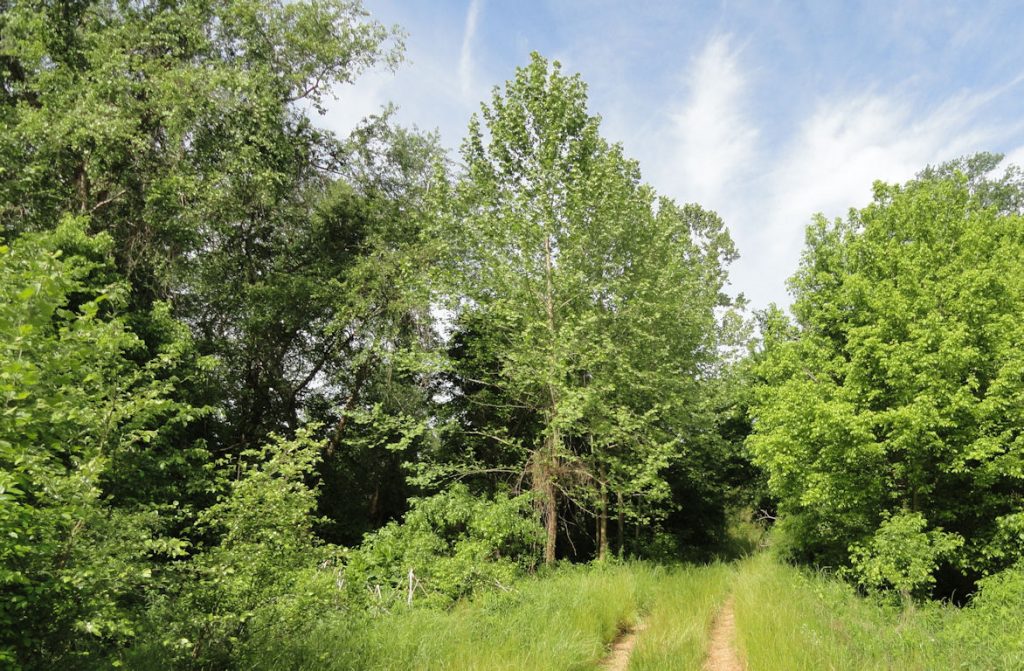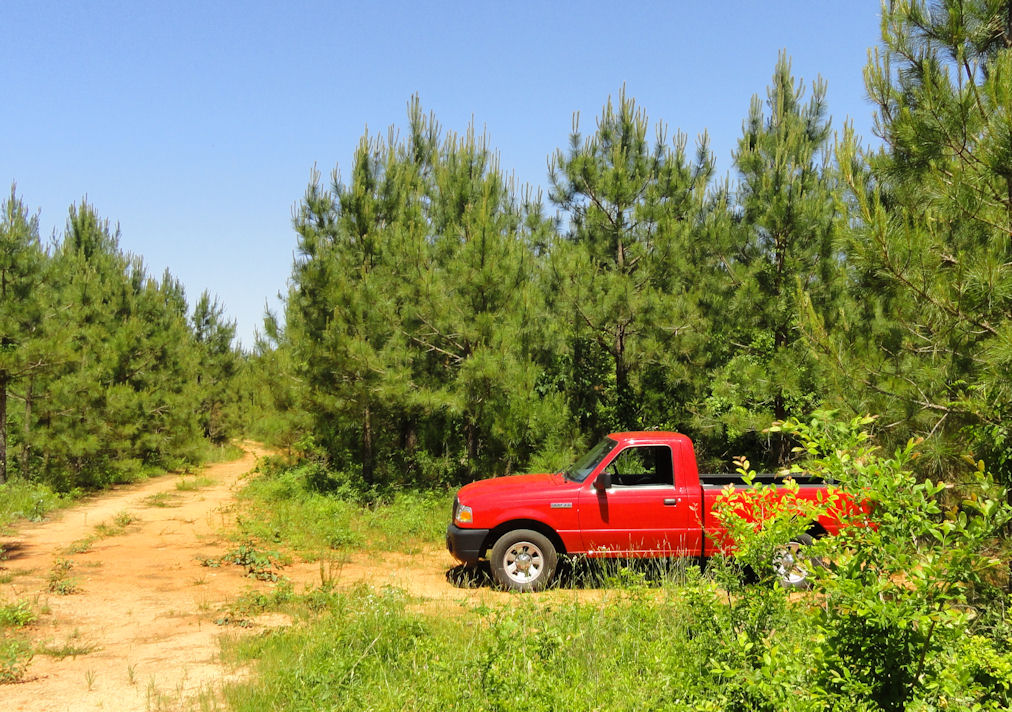
The trees have lots of new growth. Loblolly pines grow throughout the summer. In that, they are different from white pines and many others that throw up new growth only in the spring. But the spring time is the big growth spurt for the loblollies too. The trees on CP are now nine years old. I recall how barren it used to look with a few pine springs barely visible among the weeds. It is good to recall this, since I have five acres of newly planted longleaf, which are looking even more desolate. The picture above shows how trees have grown. Below is the new longleaf plantation. Longleaf seedlings look like clumps of grass. Of course some of the green you see in the picture really are clumps of grass or weeds. It will look good in a couple of years. Eric Goodman also planted some bald cypress in the wet areas and third generation loblolly at one end.
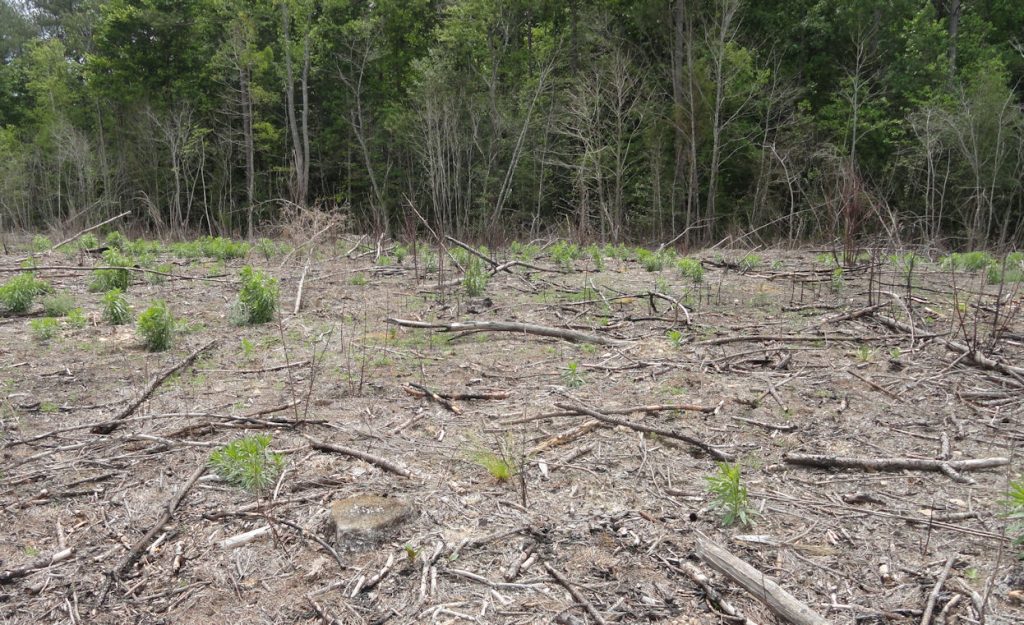
Below is the closeup of a longleaf seedling. We did good site preparation, with brown and burn last winter. This should give the little pines a head start.
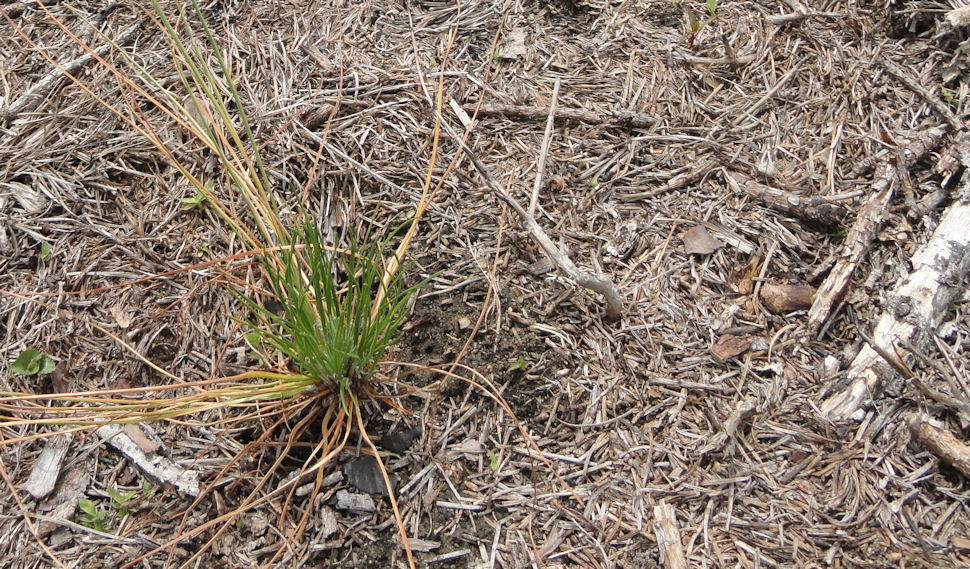
Below is a “vernal pond”, i.e. a big mud puddle, with lots of tadpoles. Amphibians need these sorts of things. If the pond is permanent enough to have many fish, the fish eat the eggs and tadpoles. If it is too small, the pond dries out before the amphibians are through with their development. These kind of ponds are not attractive, but they are a necessary part of the web of life.
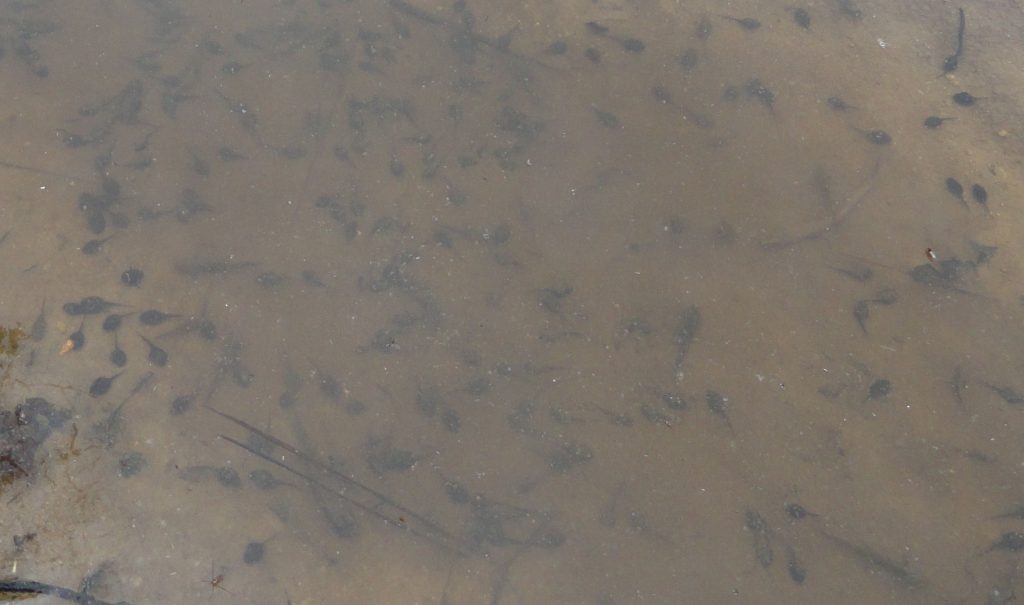
Below the hunt club planted various wildlife food and warm season grasses to encourage wildlife, especially animals like Bobwhite quail. Dominion Power, which owns the power lines, is paying us to offset the costs. It saves them the trouble and money of maintaining the cover. I have 8 acres under those lines and not using it would be a waste.
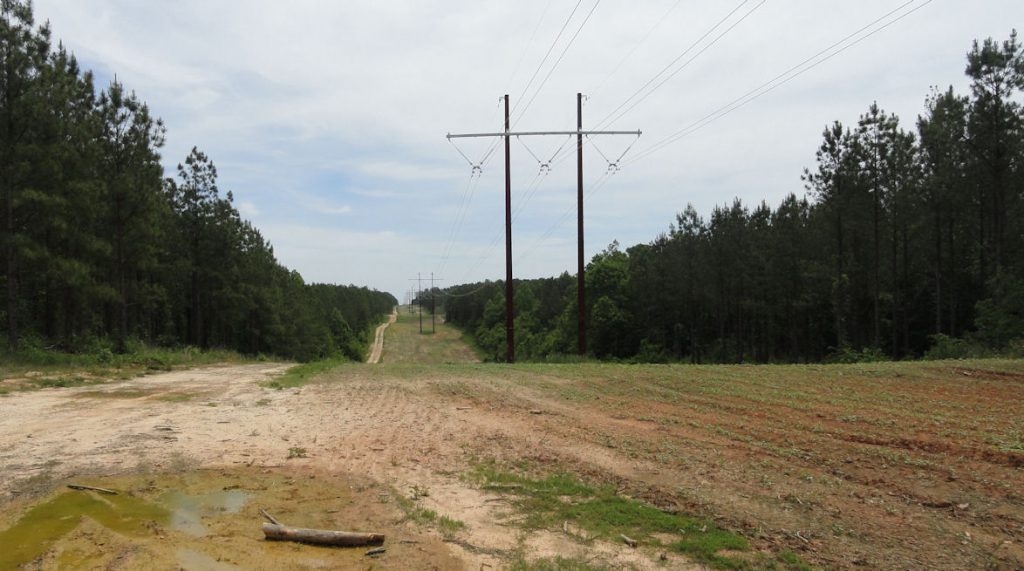
Below shows Boy Scouts clearing some paths. I guess they win merit badges for woodsmen skills. They need land to practice and I have the space.
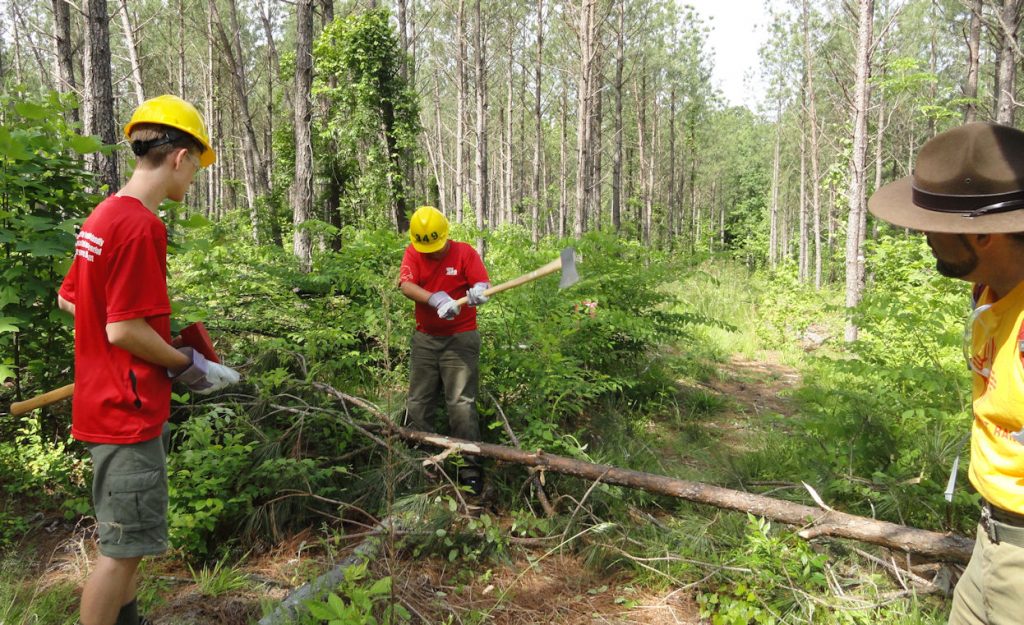
Below shows my new sycamores. They are growing fast along the watercourses. They volunteered a couple years ago. I have been cutting out the box elders and other brush. The sycamores do well in moist soils and send down a thick network of roots that holds the banks. They are not much use from the forestry profit point of view but they are beautiful trees and they get really big. I am a little allergic to them. I cough when I cut a lot of branches. Sycamores have a very distinctive smell. I suppose there is some relation. They always remind me of the brief time I lived in Indiana, on the banks of the Wabash far away.
